The strangest thing happened to me yesterday. I was chatting with a neighbor while photographing his Apache sweat lodge. (Long story.) We’d met for the first time the day before, so I was making small talk about our little valley.
I asked him if he’d seen the pair of golden eagles that lived around here, and often roosted in the tall cottonwoods near the stream.
He said he had no idea there were a pair of golden eagles around here. His tone was dubious. Then he mentioned that there WERE a couple of red-tailed hawks living in the canyon, but of course that was something else entirely.
It was the third time in as many weeks that someone had told me my eagles were hawks. The first two times, I shrugged it of as misinformation. But yesterday? I realized I might have been the one mistaken.
So I ran home and hit up my trusty friend Google. My heart sank. My favorite birds, the one’s from whom I’d learned so much, were not eagles… but hawks.
Should it matter?
The birds are no less beautiful. Or majestic. Their hunting prowess no flimsier, nor their stupefying ability to soar through the air without seeming to move at all.
So what was the problem? In my mind, they were eagles: rarer and more special than common hawks. I identified with them as being the kings of the sky. That they lived in my yard made me feel special. I told many people about my eagles.
But they were never eagles. At least, not outside my own mind. They nested inside my expectations, and laid eggs that gave me courage and confidence.
And now?
Now, I have to get over myself. I’m still freakishly lucky to live in a place where I get to watch red-tailed hawks circle over my yard on a near-daily basis. The fact that I’m even conflicted about this says quite a bit about my ridiculous character.
But expectations are powerful things, even if they don’t have a tangible presence. Take books, for example. We “expect” them to make sense. To tell a story. To inform us of their meaning, at some point, before we cease to flip the pages.
That’s their job. To tell us stuff, either in pictures, words, or both.
But what if you found a book that absolutely refused to bow to convention? That reveled in fucking with your head, while simultaneously depicting a set of images made during an artist’s career?
What would you think about that?
I’m glad you asked. Because I just finished looking at a red monograph of work by the conceptual photography/art star Christopher Williams, and I’m still scratching my head.
I knew it was his book, because photo-eye had affixed a tag that said Christopher Williams, printed in Germany, $120. That’s all I got, even after looking at the whole book. (Though the “Printed in Germany” did appear at the end of the book too, on an insert, which was a tad reassuring. That they knew how to print words at all, that is.)
I would have figured out it was his book, had I not known, because I’ve seen some of his seminal images before. They’re always inscrutable. Pictures of cameras, deconstructed. Cars, tipped like cows in a pasture. Models, obviously on set, with color bars in the frame. Corn in the husk.
I’ve read a bit about him in the past, and know there are strong motivations behind the work. Big ideas. Political, even. But you’re never going to suss that out just by looking at the pictures. I’m a bright guy, and I wouldn’t even know where to start.
But start I did, and the first handful of pages in the book are red. Like, red red. Bright red. Cherry red. Coca Cola red.
There’s no name on the cover. When you finally find a photo, on a white page, it’s a piece of yellow foam wrapped into a sculptural form. The kind you might put upon your child’s bed to make it softer. (My son was praising his yellow-bed-foam just yesterday, coincidentally.)
That picture repeats later. As do others. There are seemingly African workers in front of a Heidelberg printing press. Some images, of apples, run off the page, and reference the printing process. That, I can say with confidence.
There is one picture of boobs, that repeats, because, as we all know, Boobs Sell Books℠.
Random repeating images. Lots and lots of red pages. No words. Pictures that are odd, and perhaps discomfiting. Maybe a little hypnotic. But they give you nothing concrete.
It’s like the whole book is the spawn of a mad scientist who had sex with a bespectacled artist. It only makes you angry if you think you’re supposed to get it.
But what if you don’t try to get it? What if there’s nothing to get? The world is a messy place, as I wrote last week. Logic and reason exist, but so do chaos and terror. Money rules the day, and it always has. (Though it might have taken the form of salt, gold, oil or jewels.)
When I was done, I practically chuckled at the chutzpah it takes to make a book with no words. There’s even an insert at the end, the type that typically contains an essay or two. Maybe an artist’s exhibition history?
Nope. It was blank. Only red.
Like the look on your face, perhaps, while you’re reading this. Will you like this book? I don’t know. But I think it’s awesome, because it undercuts almost every sane idea about how to make a photo-book.
And all that red made me realize my red-tailed hawks are perfect, just as they are. What’s in a name, anyway?
Bottom Line: Inscrutable, almost offensively strange, yet perfectly awesome book by a brainy art star
To Purchase “Printed In Germany” Visit Photo-Eye
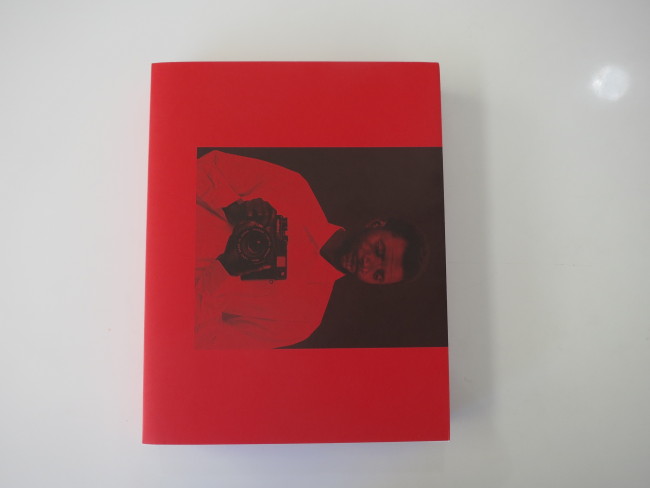
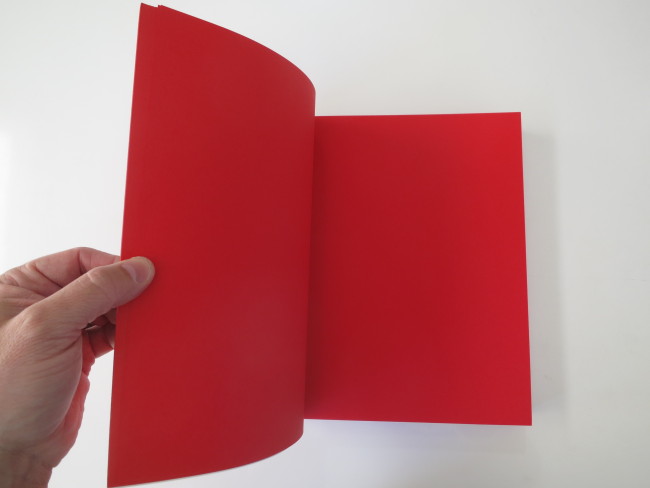
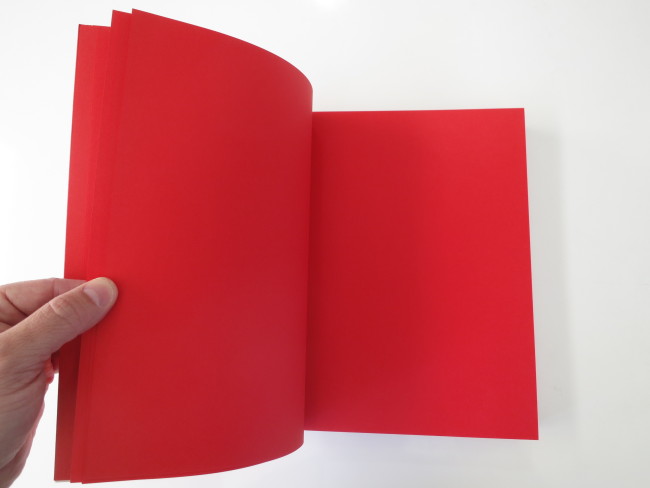
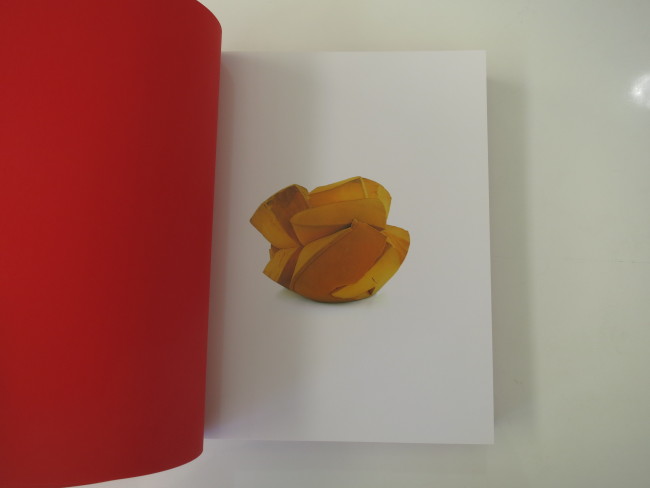
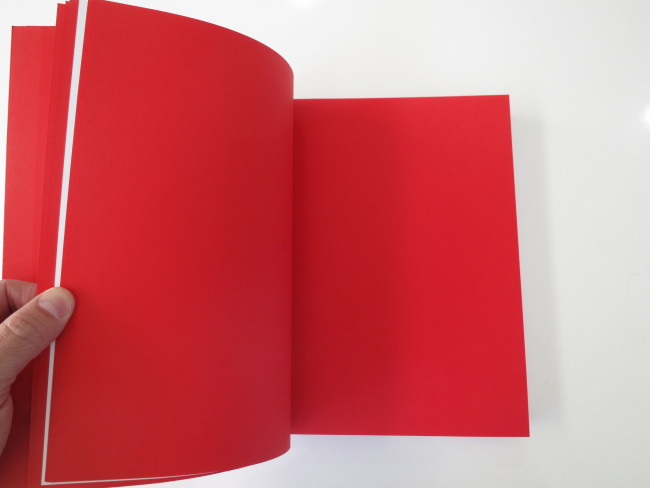
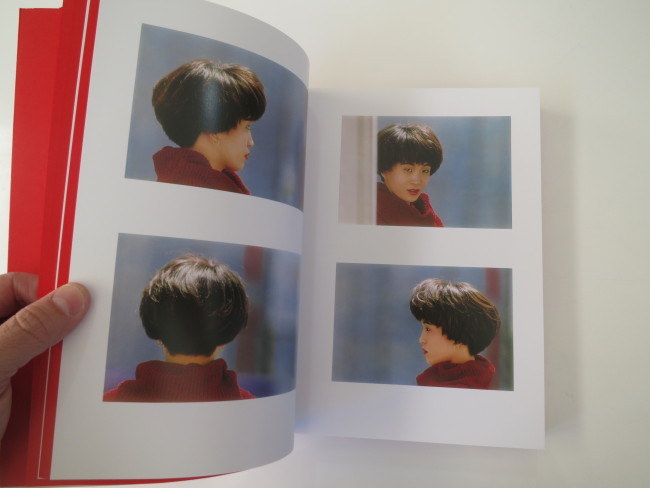
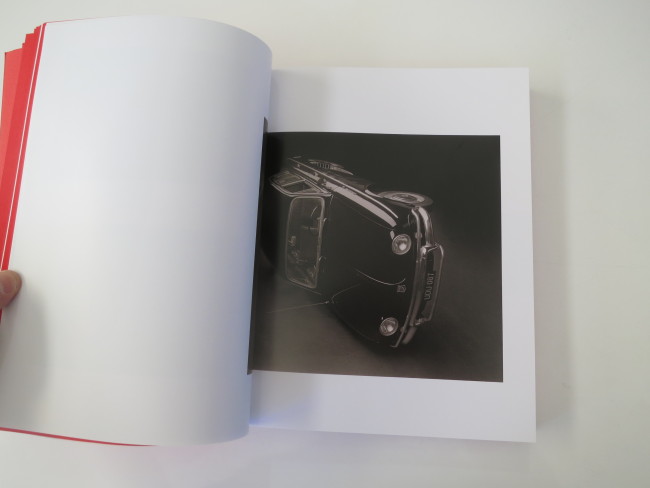

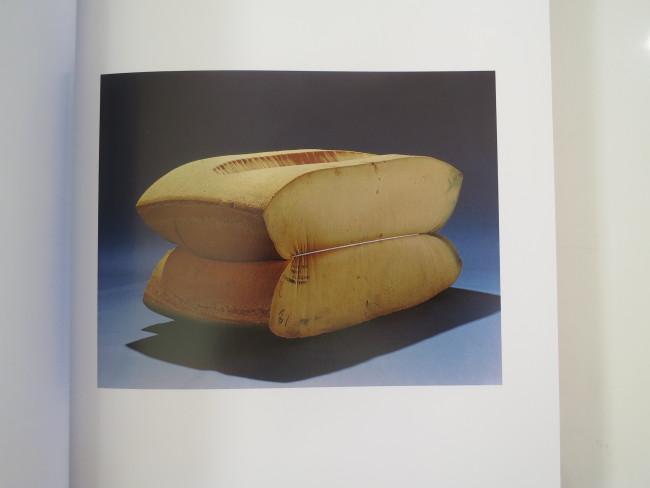

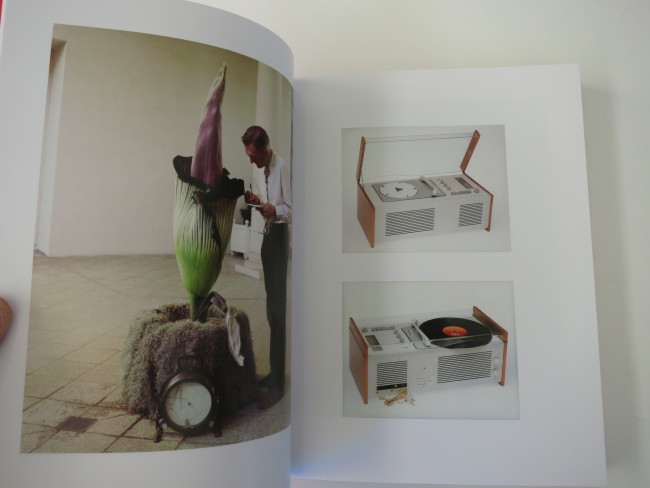
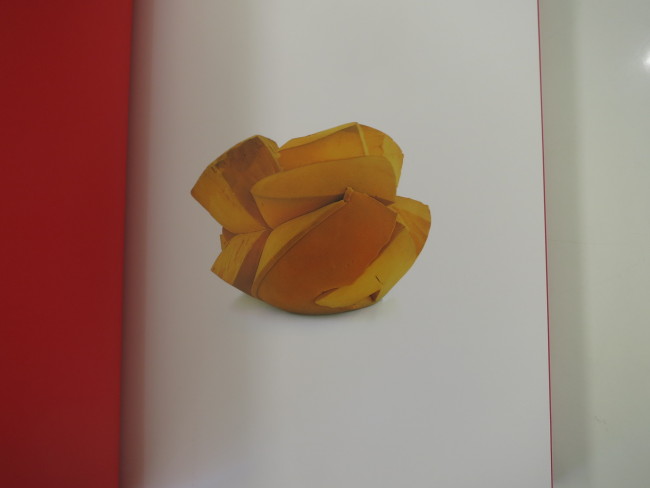
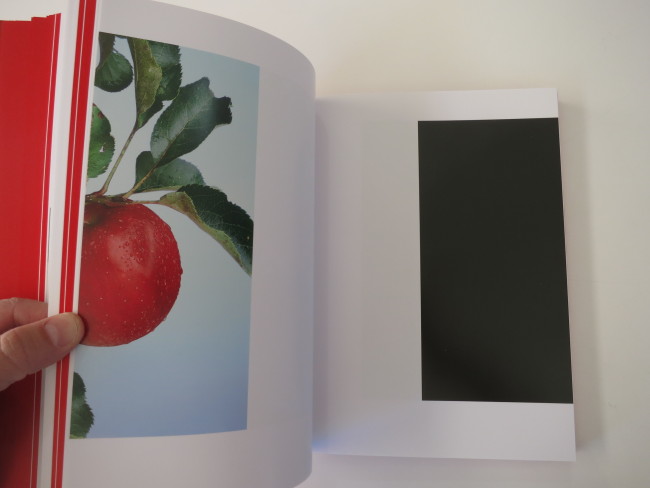

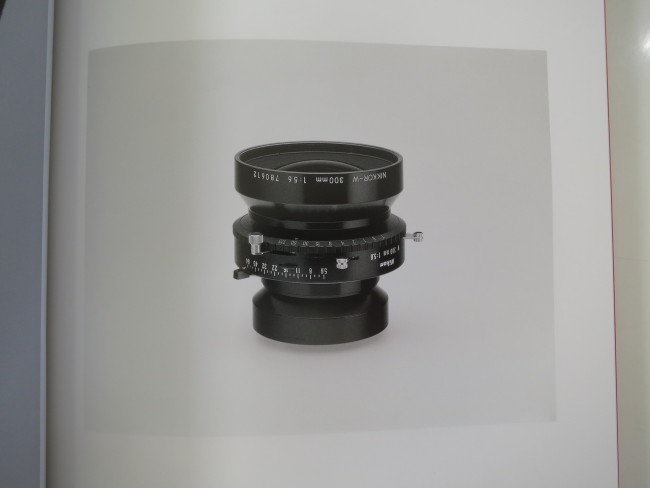
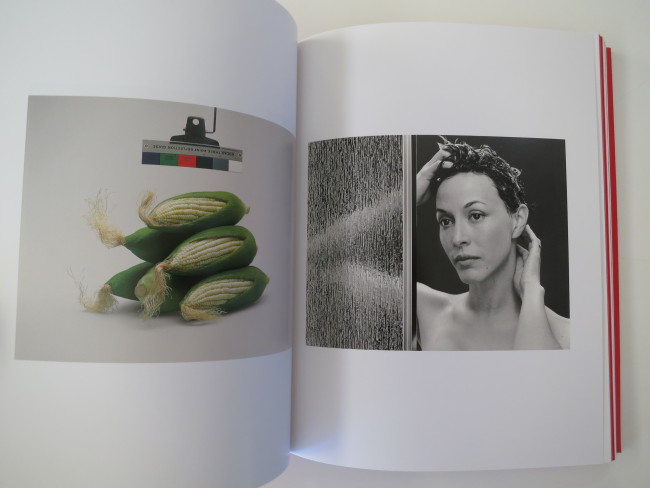
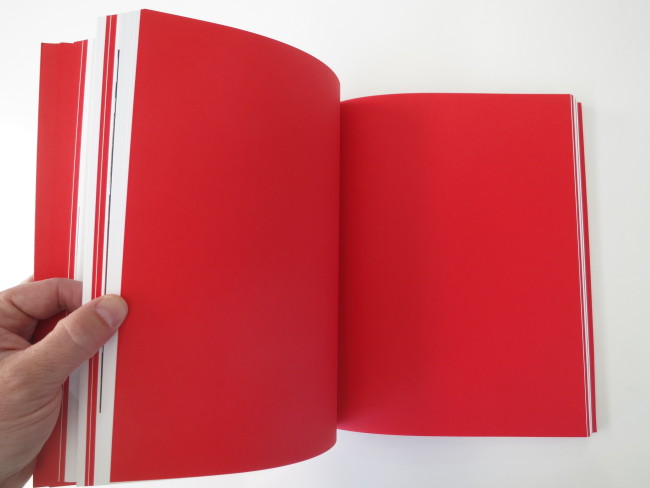


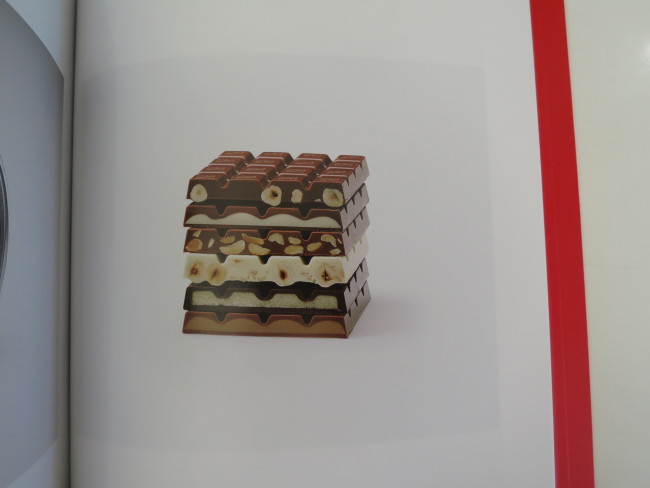
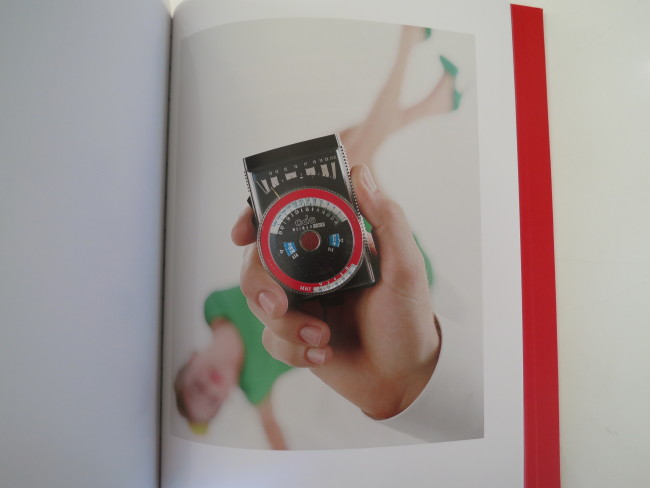
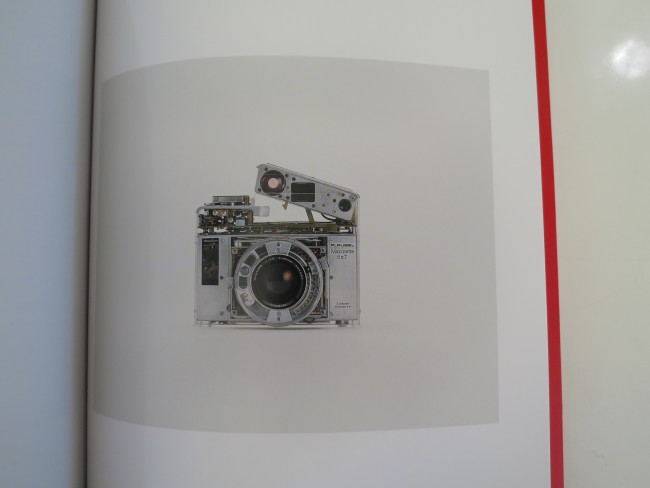

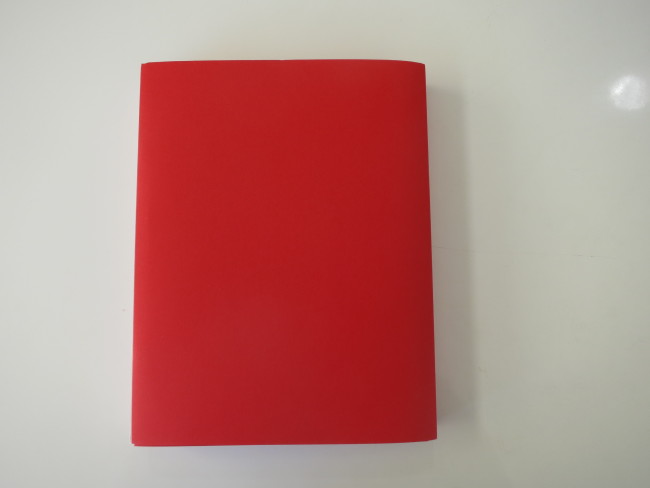
2 Comments
It would be considerably more “conceptual,” and definitely more “political” without the $120 price tag.
Looks beautiful!
Comments are closed for this article!